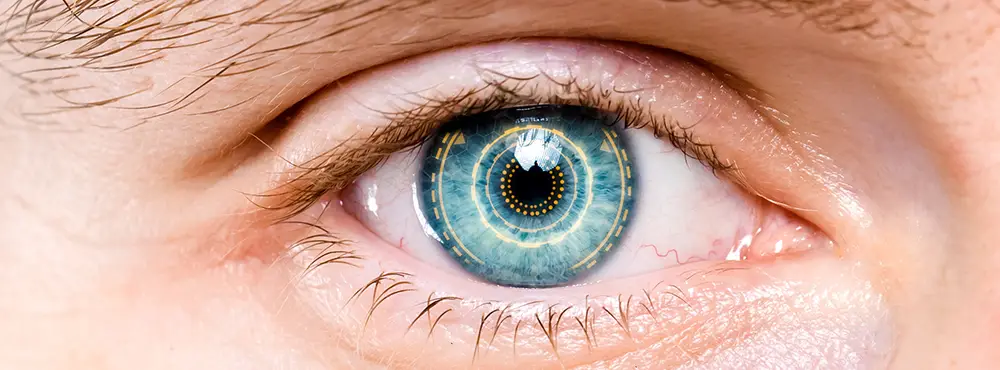Millions of people are blind and suffer from low vision worldwide. With that in mind, scientists are determined to find new ways of restoring eyesight. One commitment is to develop bionic eye implants. A technology that will be just as effective for those with visual disabilities as cochlear implants are for those with hearing problems.
Are bionic eyes possible?
The development of bionic implants is still in its infancy. Only one is currently available in the United States; however, it is not advanced enough to cater to all types of blindness.
Nevertheless, the intent on developing advanced technology could mean that many will benefit from fully functioning bionic eyes in the future. A prosthetic eye is purely for cosmetic purposes, whereas a bionic eye provides artificial vision.
What is a bionic eye?
A bionic eye is a retinal implant designed to mimic the function of the retina. It connects the retinal implant to a video camera which converts images into electrical impulses. The electrical impulses activate remaining retinal cells which then carry the signal back to the brain.
How the bionic eye works
A bionic eye works by converting images from a video camera into electrical impulses. The video camera is attached to a pair of glasses and captures and processes images. The images are wirelessly transmitted to a bionic implant at the back of the eye.
What does a bionic eye see?
The bionic implant sees a blurred image made from flashes of light rather than a steady visual perception. The flashes of light provide visual information in the form of a basic shape. This basic shape can indicate the height and width of an object and its approximate location.
Who gets a bionic eye?
A retinal bionic eye implant has been suggested for those whose vision loss is severe, for example advanced age-related macular degeneration and retinitis pigmentosa.
How much does a bionic eye cost?
To date, only three types of bionic eyes are available for sale. A device called the Argus II retinal bionic eye is one of them. It was developed in the United States and is said to cost around $150,000 [1]. The Alpha-AMS and the Iris V2 are its competitors.
How successful is the bionic eye?
Although the bionic eye provides some visual information, this is not as much as some might wish for or imagine. This is due to the number of electrodes in these devices. For example, the Argus II has 60 electrodes, whereas a million electrodes are required to see naturally.
Another limitation of the Argus II is that it doesn't allow patients to see colour. In addition to this, it is considered very costly.
Nevertheless, blind patients have reported this retinal prosthesis system to be successful in giving them the ability to read large print books and cross the street on their own. Clinical trial results have proven the bionic eye to be safe and reliable in restoring a sense of sight to those who can't see.
Bionic eyes are not able to restore vision completely. In addition to this, they do not possess the ability to give sight to someone who has never had it. The bionic eyes which are currently in development require a healthy optic nerve and a developed visual cortex.
The future of bionic eyes
Second Sight, the California-based company who invented the Argus II plans to add more electrodes to future models. This will make them capable of rendering sharper and clearer vision for those who are completely blind as a result of certain eye diseases.
Second sight is now testing the brain implant, which aims to restore vision in more people. This brain implant doesn't require you to have a working eye. Rather than implanting directly into the eye, electrodes are embedded in the visual cortex of the brain. The visual cortex is sent footage by a video camera attached to glasses.
Other researchers are already in the process of testing other devices with more electrodes, and there is the possibility that newer appliances may even produce colour vision.
The advancement of technology in the future could give bionic eyes the potential to correct most forms of vision loss.
[1] Emily Mullin (2018). Blind Patients to Test Bionic Eye Brain Implants. [online] MIT Technology Review. Available at https://www.technologyreview.com/2017/09/18/149107/blind-patients-to-test-bionic-eye-brain-implants/ [Accessed 17 August 2020]
Quick links
A guide to coloured contact lenses
A guide to cataracts
A guide to snow blindness
Disclaimer: The advice in this article is for informational purposes only and does not replace medical care or an in-person check-up. Please check with an eyecare professional before purchasing any products or remedies. For information on our article review process, please refer to our Editorial Policy.

 Offers
Offers Account
Account
 Favorite
Favorite
 Basket
Basket

 OFFERS
OFFERS















